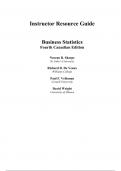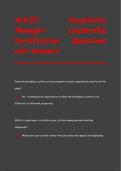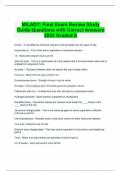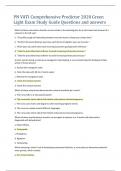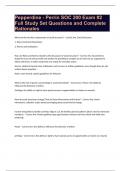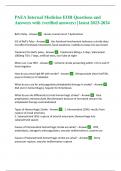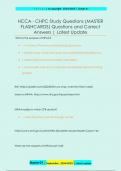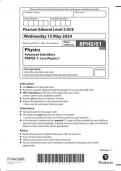Exam (elaborations)
Solutions Manual For Business Statistics 4th Canadian Edition by Norean R. Sharpe
- Course
- Business Statistics
- Institution
- Business Statistics
solution, Solutions Manual For Business Statistics 4th Canadian Edition by Norean R. Sharpe; Richard D. De Veaux; Paul F. Velleman; David Wright. ISBN: 9780135582084, 0135582083, 9780135469101, . solutions for Business Statistics 4ce Sharpe.
[Show more]
